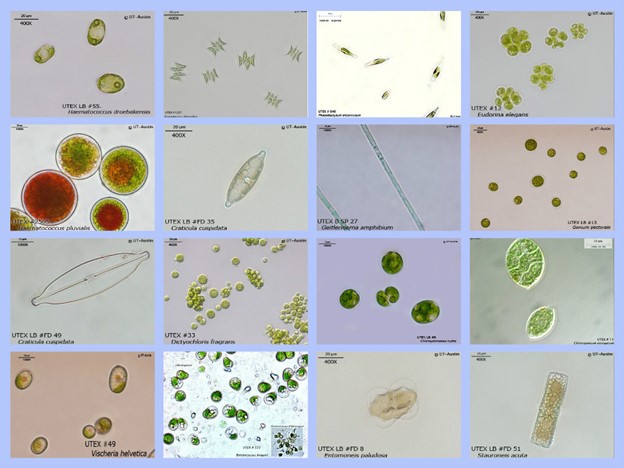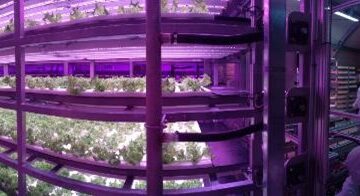Horticulture lighting research has been conducted on young plants (germination, seedlings, plugs and cuttings) for many years. Michigan State University published a series of articles in Greenhouse Grower (see references below) on bedding plant seedlings. In their research, Drs. Wollaeger and Runkle experimented with different LED wavelengths and compared them to fluorescent light on seedling height and leaf area of tomato, salvia, petunia, and impatiens.
Another study, published in GPN (Greenhouse Product News) and conducted at Purdue University, compared the effects of supplemental and sole-source lighting for LED, HPS and plasma sources on the plug quality and flowering time of petunia and geranium. In their study, they used two LED spectrums with different percentage of blue and red.
In one of our Illumitex in-house experiments, we compared the effects of two spectrums (F3 and F6) on plant diameter and root length, two important parameters in bedding plant seedlings. In the photo below I am looking at the F3 treatment with the F6 treatment above – all treatments received the same light intensity.

The plants we grew (Salanova green oakleaf and Salanova red butter) under the two LED spectrum treatments were not common bedding plants. However, we observed that consistently throughout their growth the F6 spectrum led to more compact growth and longer roots than the F3. We also noticed that the F6 displayed shorter internodal branching with nodes appearing throughout the lifecycle. The photos below show the lettuce treatments at the end of week 3 and a close up of nodes in the lettuce appearing in the F6 treatment but not the F3 treatment.

Below is a chart showing diameter and root length measurements for each treatment and lettuce type at the time of harvest. As mentioned previously, the F6-grown lettuce size was more compact and had longer roots than the F3-grown lettuce. This was the case for both green and red lettuce varieties.

The main take-away from all of this is that by using LEDs we can control the compactness, rooting, and vegetative properties without the use of growth-stimulating chemicals. Most growers want compact plugs and they want them to grow strong and, if applicable, produce flowers quickly after transplant. In the GPN article, Dr. Lopez shows that the spectrum containing more blue produced the most compact and fastest flowering plug.
These papers also point out that sole-source lighting is superior to greenhouse supplemental lighting for making plugs. There is a growing trend for greenhouse growers to build vertical shelving systems in their greenhouse. One suggestion is to use the F6 W (F6 spectrum in wide angle) as a way to shorten the tray heights and maximize plugs per square meter.
References:
http://www.flor.hrt.msu.edu/assets/Uploads/LEDs-pt1.pdf
http://www.flor.hrt.msu.edu/assets/Uploads/LEDs-pt2.pdf
http://www.flor.hrt.msu.edu/assets/Uploads/LEDs-pt3.pdf
http://flor.hrt.msu.edu/assets/Uploads/Lighting-plugs.pdf
http://gpnmag.com/wp-content/uploads/07_Lighting_GPN0914%20FINAL.pdf

